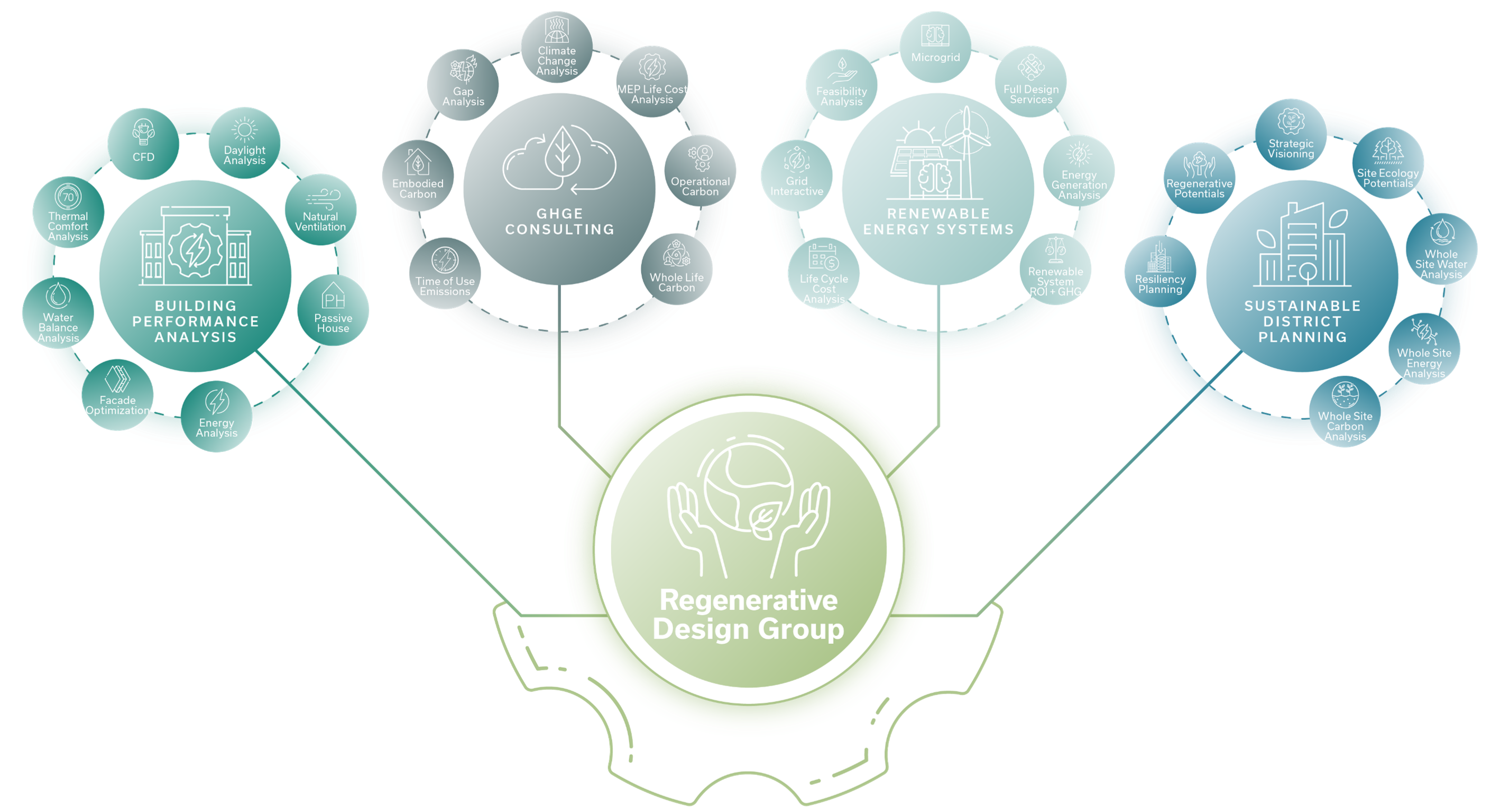Why Regenerative Design
We use our Regenerative Design services to establish and guide a project vision.
It is a robust toolkit available to optimize building performance, sustainability, and occupant satisfaction. It helps provide an understanding to the interactions and connections between the architectural design and building systems.
This is critical to make the invisible, visible because new solutions only become possible with a dynamic, data-driven approach and teamwork.
Reach out to our Regenerative Design leads to find out more:
Building Performance Analysis
We work with the entire design team to create systems to maximize the value of buildings while also protecting the environment. This offers benefits for clients in lowering costs while achieving optimal performance outcomes.
Greenhouse Gas Consulting
We analyze all three emissions sources including scopes 1-3 and deep dives in operational, refrigerant, and embodied carbon.
Renewable energy systems
We create microgrids that bring resiliency and sustainability to projects.
Sustainable district planning



